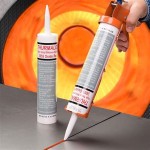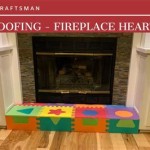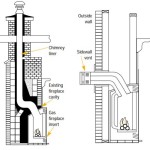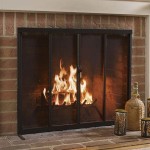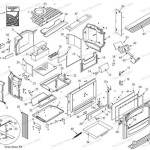Build Your Own Outdoor Fireplace: A Comprehensive Guide
An outdoor fireplace can transform a backyard into a cozy and inviting space, extending the usability of the area well into the cooler months. Beyond its aesthetic appeal, an outdoor fireplace provides warmth, ambiance, and a focal point for social gatherings. Constructing your own outdoor fireplace can be a rewarding project that adds significant value to a property. This article provides a detailed guide on how to build an outdoor fireplace, covering essential planning, material selection, construction techniques, and safety considerations.
Planning and Design Considerations
The initial phase of building an outdoor fireplace involves meticulous planning and design. This encompasses selecting the right location, determining the appropriate size and style, and ensuring compliance with local building codes and regulations. Failure to adequately plan can lead to structural issues, safety hazards, and legal complications.
Location: The placement of the fireplace is crucial. It should be situated away from flammable materials such as trees, dry leaves, and wooden structures. Consider the prevailing wind direction to minimize smoke blowing towards the house or neighboring properties. A level surface is ideal for construction, minimizing the need for extensive excavation and leveling. Access to the fireplace for fuel storage (wood or gas) and maintenance is also important.
Size and Style: The size of the fireplace should be proportional to the size of the outdoor space. A large fireplace in a small backyard can be overwhelming, while a small fireplace in a large area might appear insignificant. The style should complement the existing architecture and landscaping. Options range from rustic stone fireplaces to modern brick or concrete designs. Consider the overall aesthetic you wish to achieve and select materials that align with that vision.
Building Codes and Regulations: Before commencing any construction, it is imperative to check with local authorities regarding building codes and regulations. Many municipalities have specific requirements for outdoor fireplaces, including setbacks from property lines, chimney height restrictions, and permits. Failing to comply with these regulations can result in fines and the need to dismantle the structure.
Drafting a Plan: Once the location, size, and style are determined, create a detailed plan. This plan should include precise measurements, material specifications, and a step-by-step construction process. A well-defined plan serves as a roadmap for the project, ensuring accuracy and efficiency. Consider using professional design software or consulting with a landscape architect to create a comprehensive plan.
Material Selection and Preparation
The choice of materials significantly impacts the appearance, durability, and safety of the outdoor fireplace. Selecting appropriate materials that can withstand the elements and high temperatures is essential for a long-lasting and functional structure.
Fire-Resistant Materials: The firebox and chimney liner must be constructed from fire-resistant materials such as firebrick or refractory concrete. Firebrick is specifically designed to withstand extreme heat without cracking or deteriorating. Refractory concrete offers similar heat resistance and can be molded into various shapes for custom designs. Avoid using standard bricks or concrete blocks for the firebox, as they can crack and crumble under high temperatures.
Structural Materials: The outer structure of the fireplace can be constructed from various materials, including brick, stone, concrete blocks, or stucco. Brick and stone offer a classic and durable aesthetic. Concrete blocks are a cost-effective option that can be faced with veneer to achieve the desired appearance. Stucco provides a smooth, modern look and can be applied over a concrete block or brick base.
Mortar: Use a high-temperature mortar specifically formulated for fireplace construction. This type of mortar can withstand the heat and expansion of the firebox without cracking. Avoid using standard mortar, as it is not designed for high-temperature applications.
Chimney Liner: The chimney liner is crucial for directing smoke up and away from the fireplace. It should be made of stainless steel or clay tiles. Stainless steel liners are more durable and resistant to corrosion. Clay tile liners are more affordable but may require more frequent replacement.
Foundation Materials: A solid foundation is essential for supporting the weight of the fireplace. Concrete is the most common material for foundations. The foundation should be poured below the frost line to prevent shifting and cracking due to freezing and thawing cycles. Reinforcing the concrete with rebar adds strength and stability.
Gathering Materials: Once the materials are selected, create a detailed list and purchase them from reputable suppliers. Ensure you have sufficient quantities of each material to complete the project without interruptions. Consider ordering extra materials to account for waste and potential errors.
Construction Techniques and Safety Measures
The construction phase involves building the foundation, firebox, chimney, and outer structure. Each step requires careful execution and adherence to safety guidelines. Proper construction techniques ensure the fireplace is structurally sound and operates efficiently.
Foundation Construction: Begin by excavating the area for the foundation to the required depth. Construct a wooden form to contain the concrete. Pour the concrete into the form, ensuring it is level and free of air pockets. Embed rebar into the concrete for added reinforcement. Allow the concrete to cure for at least seven days before proceeding with the next step.
Firebox Construction: Once the foundation is cured, begin laying the firebrick or refractory concrete to form the firebox. Use high-temperature mortar to bond the bricks or concrete together. Ensure the joints are tight and even. The firebox should be designed with a slight slope towards the front to facilitate drainage. A smoke shelf at the back of the firebox helps to improve draft and prevent smoke from entering the room.
Chimney Construction: The chimney should be built directly above the firebox. Use the same fire-resistant materials as the firebox. Install the chimney liner as you build the chimney. The liner should extend above the height of the surrounding roofline to ensure proper draft. Mortar each section securely, ensuring a tight seal. Consider adding a spark arrestor at the top of the chimney to prevent embers from escaping.
Outer Structure Construction: Once the firebox and chimney are complete, begin constructing the outer structure using the chosen materials. If using brick or stone, lay the materials in a consistent pattern, ensuring the joints are even and the mortar is well-packed. If using concrete blocks, ensure they are level and plumb. Apply a veneer or stucco to the outer structure to achieve the desired aesthetic.
Safety Measures: Safety is paramount during the construction process. Wear appropriate personal protective equipment, including safety glasses, gloves, and a dust mask. Use caution when handling heavy materials. Ensure the work area is well-ventilated to avoid inhaling harmful fumes. Follow manufacturer's instructions for all materials and tools. If you are not comfortable performing any of the construction steps, consult with a professional contractor.
Testing and Inspection: After construction is complete, allow the mortar to cure fully before lighting a fire. Start with a small fire to gradually heat the firebox. Observe the fireplace for any signs of cracking or structural issues. Have the fireplace inspected by a qualified professional to ensure it meets all safety requirements and complies with local building codes.
By following these guidelines, individuals can successfully build their own outdoor fireplace, creating a beautiful and functional addition to their outdoor living space. Thorough planning, careful material selection, and diligent construction techniques are key to creating a safe and enjoyable outdoor fireplace.

How To Build An Outdoor Fireplace Today S Creative Life

Diy Outdoor Fireplace Kit Fremont Makes Hardscaping And Easy

How To Build An Outdoor Fireplace Step By Guide Buildwithroman

How To Build An Outdoor Fireplace Step By Guide Buildwithroman

Pima Ii Diy Outdoor Fireplace Construction Plan Designs Patio

How To Build An Outdoor Fireplace Step By Guide Buildwithroman

How To Build An Outdoor Stacked Stone Fireplace

Saguaro Diy Outdoor Fireplace Plan

How To Build An Outdoor Fireplace Step By Guide Buildwithroman
:max_bytes(150000):strip_icc()/milkpaint-286c9ee63b604ca1aaecac5233c8a3f3.jpg?strip=all)
10 Free Outdoor Fireplace Construction Plans


